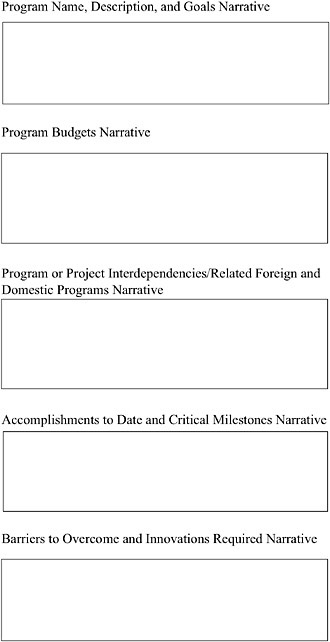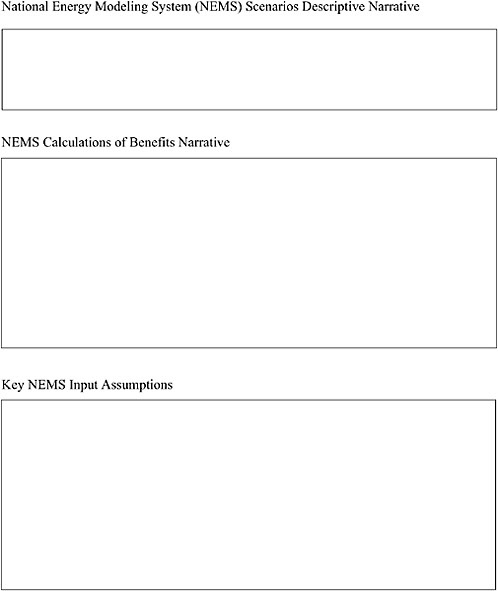G
Information to Be Requested of the Department of Energy
Each panel applying the methodology to the various Department of Energy (DOE) programs will need to gather information about its particular programs. The information request and supporting documentation should take the form of a brief program assessment summary (PAS) (see Figure G-1). Individual assessment summaries should be prepared for each project in the program portfolio. It is suggested that DOE should provide the following information for each program:
-
Program roadmap and logic;
-
Articulation and quantification of program goals (near term, intermediate, final);
-
Annual program budgets—to date, current, and needed to achieve the program’s goals;
-
Co-funding—to date, current, and needed to achieve the program’s goals;
-
Identification of complementary or competitive foreign and nonfederal domestic programs;
-
Identification of other programs that comprise enabling and complementary technologies to the program under review;
-
Key accomplishments (milestones met) to date;
-
Barriers to program goal accomplishment and an identification of their importance to the program;
-
Technological or infrastructure innovations or breakthroughs needed to meet the program’s goals and identification of competitive technology; and
-
Other information and data as might be requested by the panel.
Similarly, DOE should provide the following information for each project in the program portfolio:
-
Description of how the project aligns with and supports the program’s goals;
-
Articulation and quantification of project’s goals (near term, intermediate, final);
-
Annual project budget(s)—to date, current, and needed to achieve the program’s goals;
-
Project co-funding—to date, current, and needed to achieve the project’s goals;
-
Identification of those projects, in addition to those under review, that comprise enabling and complementary technologies;
-
Key accomplishments (milestones met) to date;
-
Barriers to project goal accomplishment and an identification of their importance to the project and program; and
-
Technological or infrastructure innovations or breakthroughs needed to meet the project’s goals.







